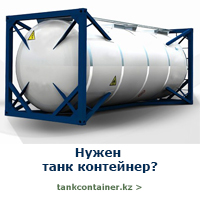@evhpercy34510032
Профиль
Регистрация: 2 недели, 5 дней назад
The right way to Scale Azure Virtual Machines for High Availability
Scaling Azure Virtual Machines (VMs) for high availability is a critical task for businesses looking to make sure their applications and services stay accessible, resilient, and performant, even in the face of system failures or surprising traffic spikes. Azure affords quite a lot of tools and strategies to help organizations scale their VMs efficiently while sustaining high availability. In this article, we’ll discover find out how to scale Azure VMs and set up the infrastructure to assist high availability.
Understanding High Availability in Azure
High availability (HA) refers to systems designed to operate continuously without failure for a long interval of time. In the context of Azure, it means making certain your virtual machines are always running, even when an sudden situation arises—be it hardware failure, software errors, or network disruptions.
Achieving HA requires leveraging Azure’s built-in capabilities, including redundancy, load balancing, and geographic distribution. Azure’s architecture contains services that may automatically detect and address failures to ensure that workloads keep up and running.
1. Azure Availability Sets
One of the fundamental tools for achieving high availability in Azure is Availability Sets. An availability set is a grouping of VMs that ensures your VMs are distributed across completely different physical hardware within a data center. By putting VMs in an availability set, Azure ensures that the VMs are isolated from one another in terms of the physical hardware that hosts them.
In practice, this means that if one physical server or rack of servers goes down, only some of your VMs will be affected. The others will continue to run, minimizing downtime. Availability sets use key ideas: Fault Domains and Replace Domains:
- Fault Domain: This defines a rack of physical servers in a data center. By distributing VMs throughout multiple fault domains, you may avoid having all VMs on the same physical server.
- Replace Domain: When Azure performs maintenance or updates, it does so in a staggered manner. VMs in several update domains will be updated at different times, meaning not all your VMs will go offline for upkeep at once.
2. Azure Virtual Machine Scale Sets
For more dynamic scaling, Azure Virtual Machine Scale Sets (VMSS) provide an automatic way to scale out or scale in the number of VMs primarily based on demand. VMSS lets you define a set of an identical VMs that automatically adjust in size or number as required.
VMSS are ideal for applications that need to handle fluctuating workloads. With VMSS, you may automatically scale out by adding more VMs when visitors spikes, and scale back in by removing VMs when visitors drops. This automation not only reduces manual intervention but in addition improves resource utilization and helps make sure that your applications are always highly available.
In addition to scaling, VMSS also integrates with Azure Load Balancer to make sure traffic is efficiently distributed throughout the VMs. This ensures that no single VM is overwhelmed, further enhancing high availability.
3. Load Balancing with Azure Load Balancer
Azure Load Balancer is a service that distributes incoming network traffic throughout a number of VMs, ensuring no single machine is overburdened and stopping downtime. For high availability, you need to use Azure Load Balancer with both Availability Sets and VMSS. It helps you maintain a smooth consumer experience by directing visitors only to healthy VMs.
There are primary types of load balancing options in Azure:
- Inner Load Balancer (ILB): This type is used for applications that are hosted inside a virtual network. It provides load balancing for inside applications, such as database clusters or inner services.
- Public Load Balancer: This is used for internet-facing applications. It routes external visitors to your VMs and scales them primarily based on the incoming demand.
By configuring Azure Load Balancer with your VM infrastructure, you ensure that visitors is always directed to operational VMs, making certain no single point of failure.
4. Geo-Redundancy with Azure Availability Zones
For even higher availability, especially for mission-critical applications, Azure Availability Zones help you distribute VMs across a number of physical locations within an Azure region. Every zone has its own power, cooling, and networking, meaning that even when an entire data center goes offline, the workload can continue in different zones within the identical region.
Using Availability Zones together with Availability Sets and Load Balancers provides geographic redundancy and ensures that your application stays available, regardless of failures in a specific part of the Azure region.
5. Automating Recovery with Azure Site Recovery
While scaling and load balancing are critical to handling failures within a single Azure region, Azure Site Recovery ensures that your environment stays available even if an entire area faces an outage. Site Recovery allows you to replicate your VMs to another Azure area or on-premises data center. In the event of a catastrophe or region-wide failure, Azure can automatically failover to the backup area, minimizing downtime.
Conclusion
Scaling Azure Virtual Machines for high availability includes leveraging Azure’s strong set of tools, including Availability Sets, Virtual Machine Scale Sets, Load Balancers, Availability Zones, and Site Recovery. By using these tools effectively, businesses can ensure that their applications are resilient to failure, scalable to satisfy altering demands, and always available to end-users. As cloud infrastructure continues to evolve, Azure provides the flexibility and reliability required to fulfill modern application calls for while minimizing risk and downtime.
In the event you beloved this article and also you desire to get details with regards to Azure Cloud Instance kindly visit our own site.
Форумы
Тем начато: 0
Ответов написано: 0
Роль форума: Участник


